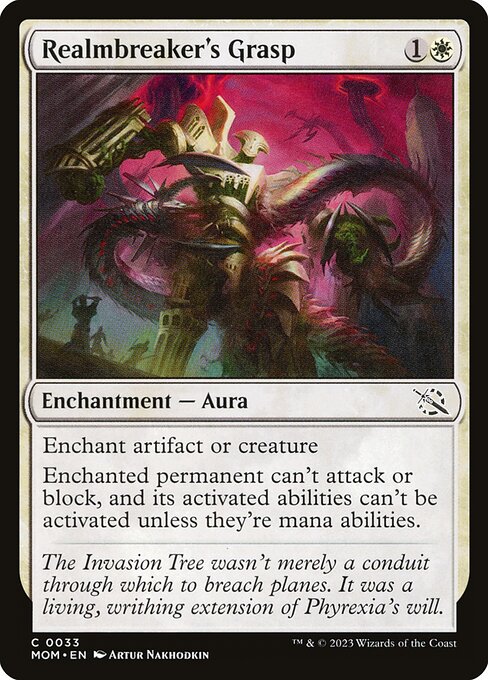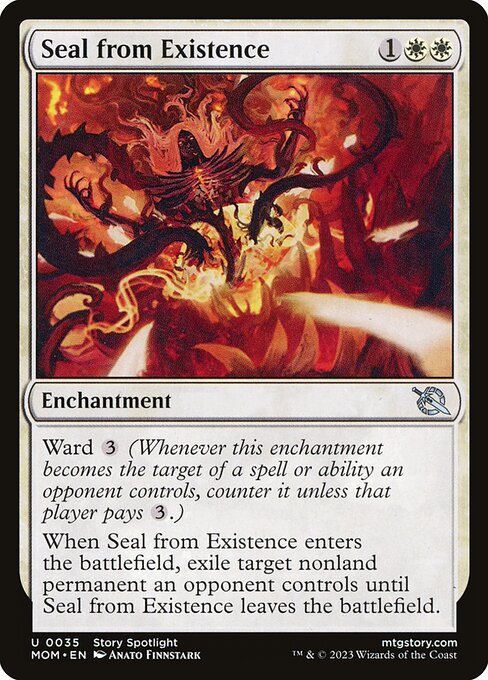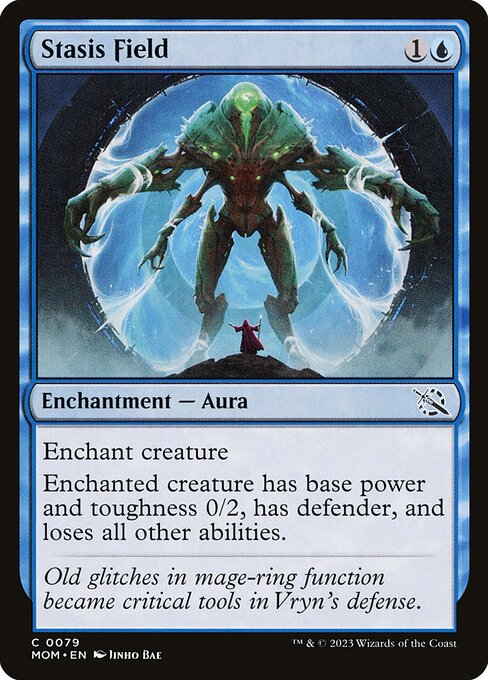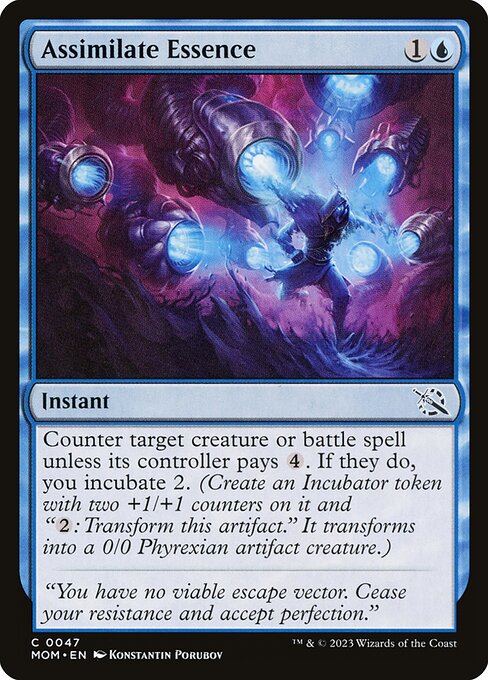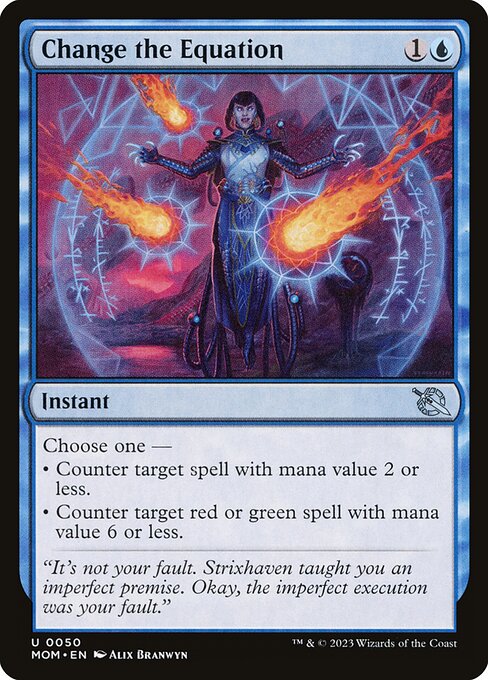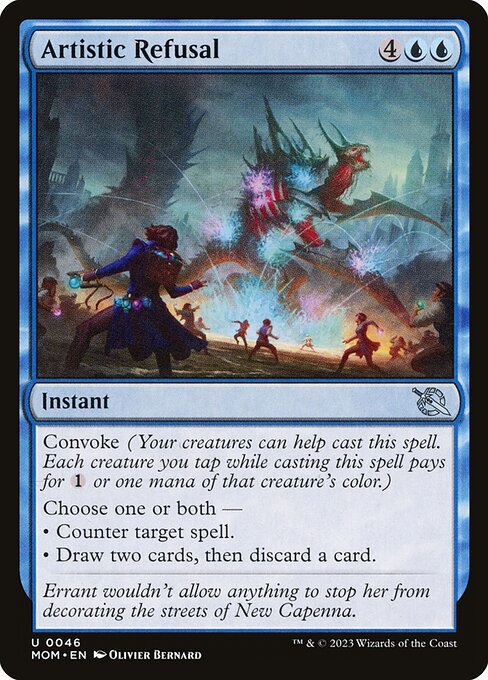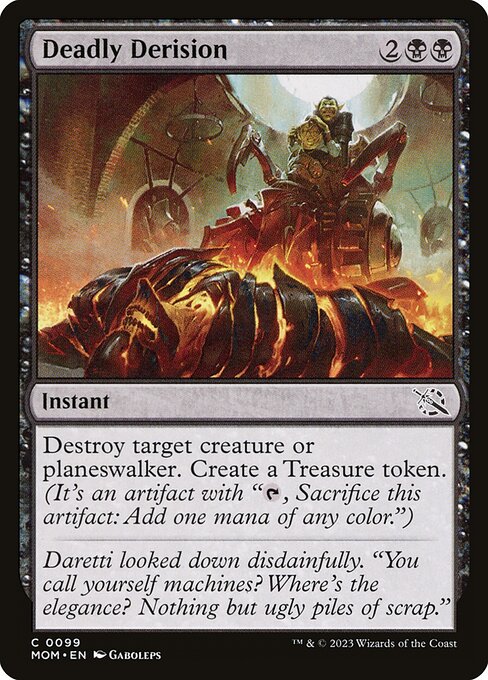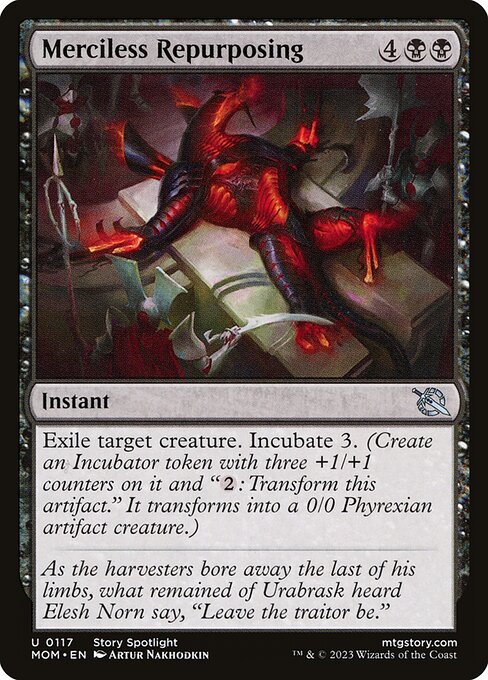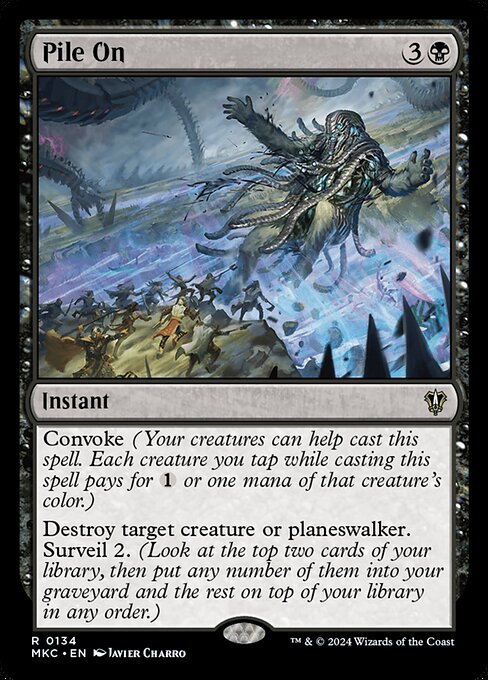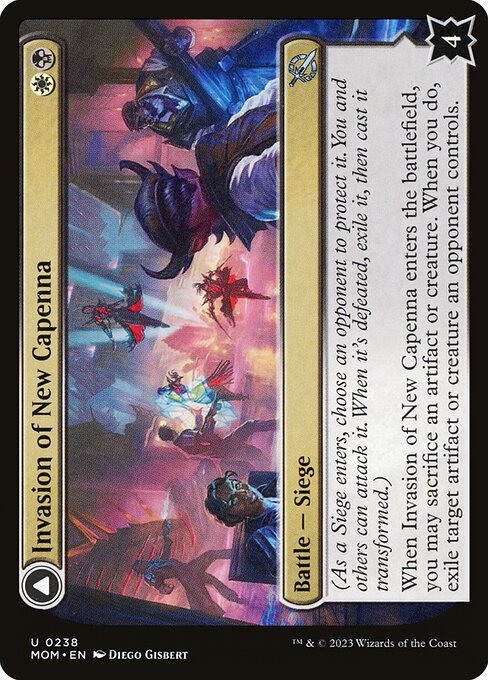It is this time of the Magic yearly cycle. New set will soon his Arena, we are going to play with brand new cards and experience something that fans of other versions of Magic almost never experience: a completely new format different from anything before. But this privilege comes with a price. Diving into a new format requires some knowledge of the new cards, and the learning curve can be pretty steep. But don’t worry too much, mtgazone.com has you covered. For grading of all the cards in all colors, you can go to excellent articles by j2sjosh. But it takes two to play a game of limited, removal guide will give you advice on what cards to play, but what about the opponent? The below removal guide is aiming to help you to understand how does your removal align with opponents creatures, but also how safe are your creatures from opponent’s removal. Knowing this will let you play around certain scenarios from day 1 already and knowing what to do that early is very often linked to winning more.
As previously, I will look at the four categories of removal spells:
- Unconditional Removal
- Conditional Removal
- Tempo-based Removal
- Sweepers
Each type of the removal plays differently and suits a slightly different play style. I hope that after reading this text you will understand those differences and will be able to apply those different styles in your drafts. In this part we will focus on the unconditional removal spells, but keep in mind that borders between those categories can sometimes be blurry.
Unconditional removal is the easiest to grasp form of removal. There was a creature – there is no creature. No questions asked, any creature is game, nobody is safe. Unconditional removal is a category you want to have access to in most decks. Especially in a bomb-ridden format like MOM seems to be. Sitting with a spell that deals 3 damage in your hand while a 4/4 wreaks havoc to your life total. Luckily for you, MOM is not short of permanent removal. Unconditional removal usually is concentrated in the Esper wedge with Black being the king of unconditional removal, White having its own spin of it in pacifisms and oblivion ring-like effects and Blue technically has some removal but rarely it is good at lower rarities.
March of the Machine (MOM) Limited Guides
- Five-Color Archetype Guide - New!
- Tier List
- Archetypes Guide and Example Decks
- Battles Guide
- March of the Machine: The Aftermath Guide and Review
- Arena Open
- Draft Guide
- Combos and Synergies
- Underperformers and Overperformers
- Mechanics Guide
- Removal Guide: Unconditional Removal
- Removal Guide: Conditional Removal, Tempo and Sweepers
- Sealed and Prerelease Guide
- Multiverse Legends
- White Review
- Blue Review
- Black Review
- Red Review
- Green Review
- Artifacts, Lands, and Multicolor
White
Realmbreaker's Grasp is an Arrest variant, but better and at a price of a Pacifism. That is some serious rate for a common – it is cost effective allowing you to, say, double spell with it on turn 5. Because it is an Aura, it runs a risk of getting neutralised but most white unconditional removal will run into that problem, so you should always expect it.
Having said that, there are several cards you might want to take into account while playing with Grasp: there is an enchantment removal spell that I think will be main-deckable in Sunder the Gateway. Especially WB decks that have Phyrexian synergies might want to run one copy of that as it can be just a 2/2 Phyrexian if you have no target for the artifact or enchantment removal, which is a fine fail safe.
And all white decks will, or at least should, run Angelic Intervention, and instant that grants protection from a color and a +1/+1 counter. Protection rules state that if a creature gains protection of the color of its auras, those auras fall off even when they are already on the creature so a spell like that would work as a Disenchant for Pacifism on top of its other uses.
Keep that in mind, also when you are the player being pacified – you may turn the tables on your opponent and make the thing they wanted to deal wit even stronger. Despite those drawbacks, the cheap cost and broad scope is something that makes
If that one was solid, Seal from Existence is great. Deals with any permanent, deals with tokens forever, the Ward 3 makes dealing with it awkward and protection can save from it only at the moment of casting (so do consider it when casting yours). That is a serious piece of removal with potential constructed use and will be a first pick consideration in many MOM packs in draft.
Lastly, Alabaster Host Intercessor is an interesting one. Known in the Limited lingo as “removal on a stick”, the effect to get rid of opponent’s stuff while advancing your board presence is very powerful. AHI does cost 6 mana but has a great fail safe in Plainscycling, meaning you can pay 2 mana, discard it and get a plains from your library. This, combined with only one White mana in its cost means that multiple AHIs can be a stand-alone plan for a control deck in the format and that White doesn’t even have to be a primary color for that deck: AHIs splash themselves, and first copy you draw can count itself as a land. Of course being a creature AHI can be killed and reverse the removal effect but 3/4 is a lot in this format so opponent will have to use a decent card to reverse the removal effect, making my hopes for AHI being good in the format high.
Blue
Blue is no a color that springs to mind when you say “unconditional removal” but there are always several cards that would loosely fit into that category in every set. In MOM we have Stasis Field. The main types of removal for blue are spells that make a creature tap permanently or spells that make a creature small permanently. MOM has the latter. Stasis Field is a 2 mana Aura that converts its target into an 0/2 Defender with no other abilities. It is similar to an Arrest, with one key difference of enabling the creature to block. Seems little but this is a difference between giving opponent 3-4 extra life or not, which makes a world of a difference. It is also worth noting that Stasis Field can accidentally make opponent’s creature better – if you play it on a 2/2 incubate token it will actually become 2/4 as its base power and toughness are 0/0 and all the actual power comes from the +1/+1 counters which are not affected by the Stasis Field. And all the drawbacks of Pacifism still apply to it, making it, in my opinion, a much weaker card that I would not want to have in my deck unless forced to.
Disturbing Conversion is similar to Stasis Field. Instead of turning its target to a 0/2, it reduces its power by the number of cards in its controller’s graveyard. On the plus side, it can be played at an instant speed and fuels itself by milling both players for 2 cards, so can be used to enable good trades. On the minus, it doesn’t do anything to the target’s abilities, and can still leave a good blocker behind if the creature survives with it on. Aside from things that can deal with Auras this card also stops doing anything if opponent has any form of graveyard hate, which exists in the format. For example Tymaret, Chosen from Death, which is one of the multiverse legends, would over time incapacitate the Aura by exiling cards from creature controller’s graveyard. And “over time” is a key part here. Cards like Disturbing Conversion are designed to keep you alive for long enough to implement your game plan. And in this case, mill / self mill should be a part of that plan – making me think it may play a part in UB strategies in the format as they do have some mill synergies included. Still, Conversion is a very situational card and not every deck will want one. It still has the same issues as Stasis Field and is worse as a removal so the instant speed and mill effect have to compensate for that in order for it to be good.
Last category of unconditional removal are counterspells. It is a preventive removal as the cards won’t even hit the battlefield when countered, but that kind of power comes at a cost. You need to be ready to counter and that means keeping your mana open, which means you can’t spend that mana. And spending less mana means you will be more likely be behind on board. So in a deck that plays counterspells make sure that you have plenty of things to play at instant speed beside the counters.
The prime example of MOM counterspells is Assimilate Essence. It will counter most creatures in the first 6-8 turns. Additional bonus on being able to get rid of a Battle is not just flavour text. And even if it does fail, it makes sure opponent is tapped out and you get a 2/2 as a part of the deal. I think it will be a powerful card in this format. It is a functional two drop: you can trade it with opponent’s turn 2 play like you might do with a 2-drop creature. Later in the game it deals with the biggest threats, and there are plenty of those. As for the instant package to supplement Assimilate with? Well, there is a host of cards at instant in the format including Meeting of Minds, a 4 mana draw 2 cards with convoke that is a perfect companion for any counter in the later game. So play with it freely but also be careful playing your Creatures and Battles into open 1U of your opponents.
Change the Equation is one of the cycle of 5 color hosers in MOM. Each of this card has a universal effect that becomes way better if it targets permanents or spells of opposing colors. Blue’s opposing colors are Red and Green, and Change the Equation counters a spell costing 2 or less mana or a spell costing 6 or less mana if it is Red or Green. In a balanced format, you will encounter Red and/or Green decks in ~60% of the games. But that means in 40% of the games you will not. A 2 mana counterspell that counters a spell costing 2 or less is not a good card. A 2 mana counterspell that counters spells costing 6 or less is a fantastic card. This large delta and big fail potential is characteristic for sideboard cards. And I am sure that if I make another ranking of the best sideboard cards in Limited, Change the Equation will be high up on it but for now I will refrain from playing it in Best of 1. That may change if it turns out that Red and Green are the best colors in the set and 80% of decks on 17Lands.com play those colors. Then the risk may be worth it as in most games you will have targets and even if not, you play with a potentially worse deck. But initially I would avoid playing it.
Artistic Refusal can counter anything but there is a mana cost involved. Leaving 6 mana open is a significant cost. You can only do it on parity or when you are ahead. But Refusal does have convoke. And that is a key part of my evaluation of that card: I want my deck to be able to: reliably cast the Refusal for 3 mana, have enough of other instant effects to make sure I am not going to lose my mana, have effects that let me bouncing something in order to counter it when an opponent tries to replay it. And in those scenarios the card can be great. Counterspell that draws cards with some selection is exactly the thing that I would be looking for in my control tempo deck.
Black
And finally the king of unconditional removal, Black. And a really nice collection of spells we have here.
At lower rarities, Deadly Derision looks like an all-star. Grim Bounty but at instant speed? Sign me up, please. Yes, 4 mana, yes, BB in the cost but you are getting a lot for that price. Killing anything and getting a Treasure token in a set with plenty artifact sacrifice effects is powerful and instant speed vs. sorcery speed is a big upgrade. Sorcery speed removal will mostly be a 1-for-1. Adding instant speed adds potential of 2-for-1 interactions when you play Deadly Derision in response to a combat trick or a bite spell. Deadly Derision will be one of the most powerful commons in the set, but since each pack has so many uncommons in it, it may be that it will go relatively late so keep your eyes peeled for it. You won’t regret playing it. Obviously opponent not playing anything and keeping 2BB open against you is highly sus. Play in such way to pluck it out of their hand rather than wasting combat tricks in those types of situation.
At uncommon we have Merciless Repurposing. Cost of 6 mana is a lot. But a removal that eventually gives you a 3/3 creature with relevant types is nothing to frown at. Merciless repurposing will maybe not be a staple of hyper-aggressive decks, but in a mid range or control, Repurposing looks powerful. Exile is of course a much better mechanic, as it deals with creatures that have ways of making their way back from the graveyard and reanimation spells, even though there are not many effects like that in MOM. All that means Repurposing will be great but think carefully if your deck can play it and in some cases the answer to that question will be “No”.
At higher rarity Pile On is an amazing removal spell. 4 mana to kill something and Surveil 2 is already an excellent card I would play in any deck that has Black, but adding Convoke to it means you will sometimes be able to kill the best thing opponent has on board at the end of their turn without paying a single mana. That is combining a lot of power. Imagine opponent attacking you when you are tapped out but have 4 creatures on board. You do have some good blocks, but that probably means they have some sort of a trick in their hand. You do your blocks, they play their trick and you casually tap your creatures to cast Pile On – game is likely over. So despite not looking flashy, do not underestimate the power of Pile On.
Invasion of Innistrad is technically a conditional removal, but for the purposes of this set, giving a creature -13/-13 kills everything. If you manage to play combat trick on Ghalta and Mavren in response to it, please send me the screenshots 🙂 A 4 mana instant speed removal is already a fine card. But Invasion of Innistrad is more than that. It offers an engine that will let you eventually win the game on its back side that is pretty difficult to deal with.
This time around the package of Black Unconditional removal looks truly great with excellent cards at all rarities. This indicates to me that even if Black creatures are going to be slightly sub-par, it will still be an excellent support color, where creatures will have to come from other source.
Multicolor and Colorless
Last two removal pieces come from the multicolor and colorless pool of cards. Invasion of New Capenna is a WB version of Powerstone Fracture from The Brothers' War but instead of destroying its target, exiles it. This is an effect that is powerful but requires you to have good creatures to sacrifice. If you want to play it, you do want to put things like Enduring Bondwarden, Ichor Drinker or Nezumi Informant or a non-flipped Incubator token: cards that have a large portion of their value in their ETB, cards that have death triggers on a small body, cards that cost you a small fraction of a card or cards that give you extra value from the graveyard. But given you have those, Invasion of New Capenna becomes a powerful spell.
And the back side? The Holy Frazzle-Cannon is one of the strangest equipments ever. Not giving the bonus by equipping but becoming a tribal anthem every time you attack also requires some building around. The most straightforward way to get there is to prioritise Phyrexians and Incubate in your deck, which makes the strategy of sacrificing unflipped Incubators the most likely way to activate the front side of the Battle. All in all, Invasion of New Capenna looks powerful but needs a carefully designed home to make it shine.
Urn of Godfire is an interesting card that I find hard to evaluate. Yes, this type of card was in previous sets. Universal Solvent, Goblin Firebomb were all on the unplayable side of things. But their activation cost was 7 not 6. And although filtering mana for 2 mana is not amazing it is another small upside that can come in handy in some types of decks. This is why Urn could be slightly more playable in some slow controlling multicolor decks that may have the use for unconditional removal and mana filtering with potential for recursion of the Urn to re-play the destroy ability. It will still be definitely a card I will avoid putting into my deck but maybe will be a fringe playable rather than a dud.
And that brings us to the end of Unconditional removal review. Check this space soon for conditional removal, tempo plays and sweepers!



